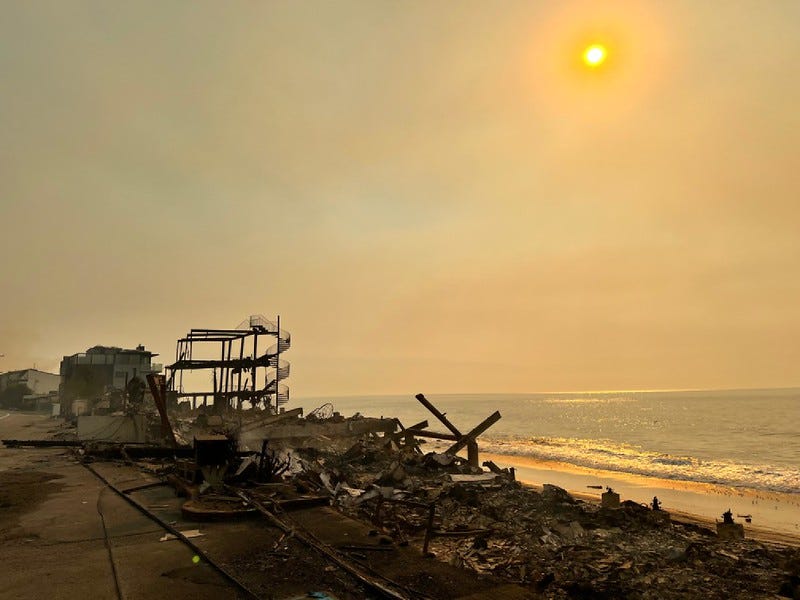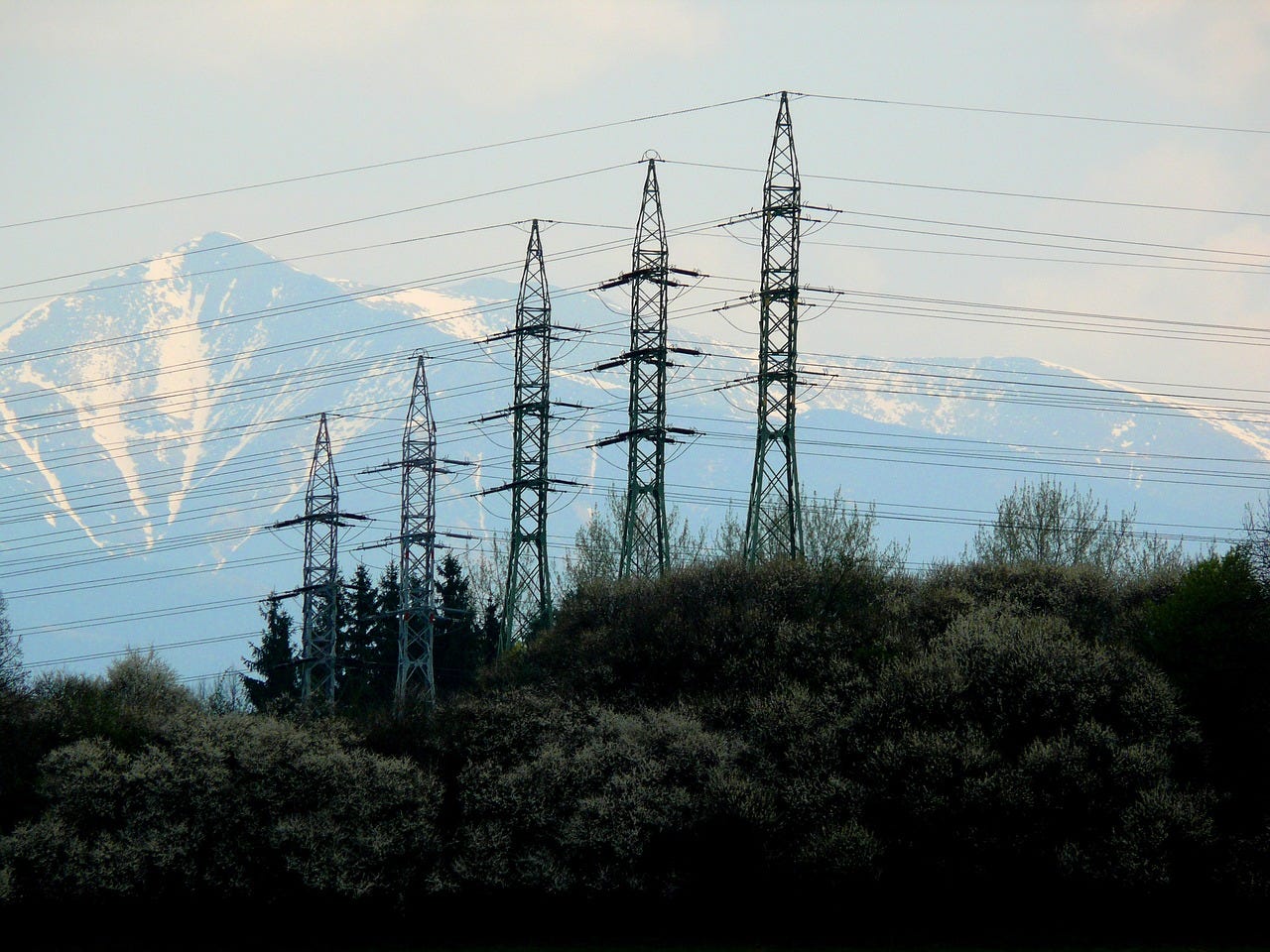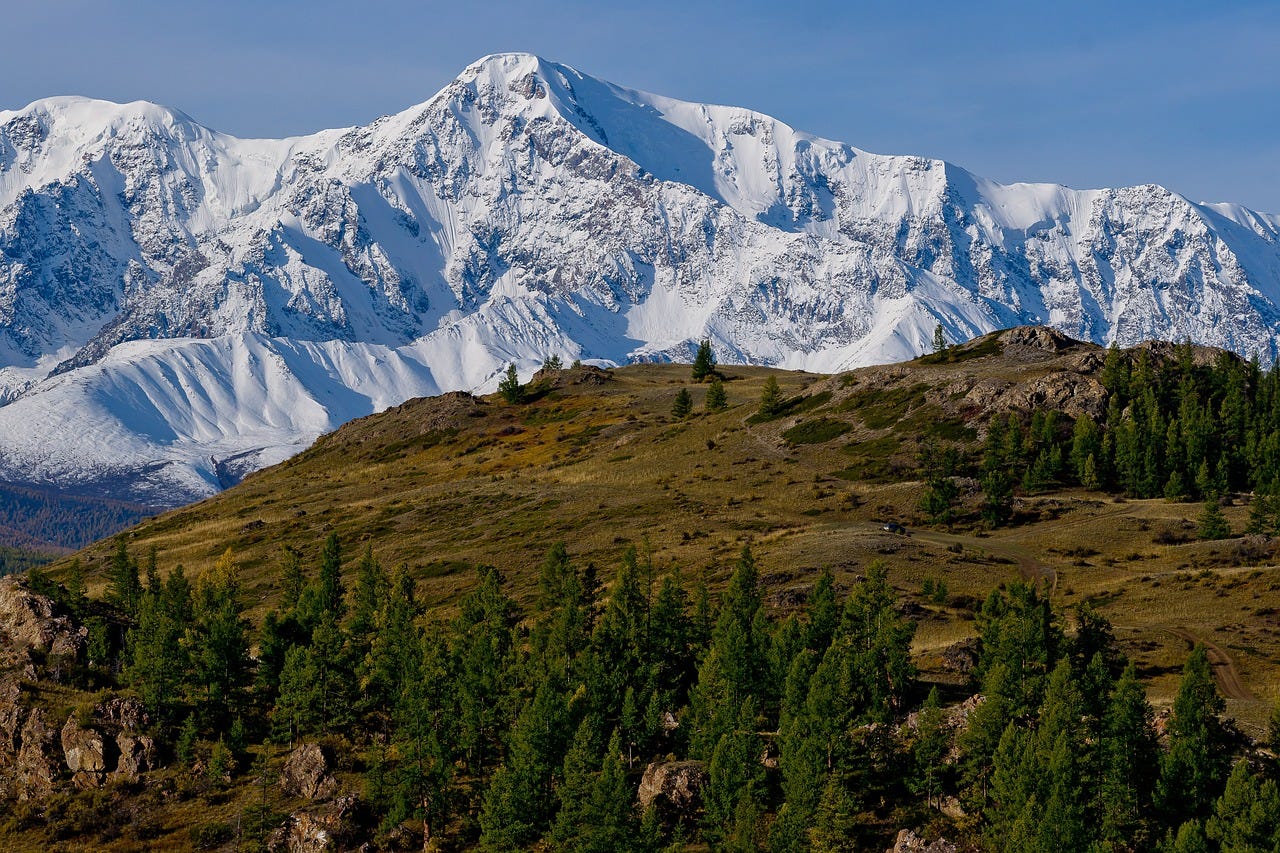California residents to bear $1 billion of costs of LA fires
Welcome to Callaway Climate Insights, your guide to global climate finance analysis.
Today’s edition of Callaway Climate Insights is free for all our readers. We really want to bring you the best and latest in climate finance from around the world. Please subscribe now.
California’s insurance plan of last resort, set up to provide insurance to homeowners when insurance companies won’t, has said for some time it’s been running out of money because of growing wildfires and stronger storms. But the Los Angeles wildfires last month tipped it over the edge.
The FAIR plan this week said that more than $4 billion in claims from the fires exhausted its reserves and as a result it will pass the cost along to insurance companies as an assessment, which means it will then be paid by policyholders in the form temporary special fees.
California isn’t the first state to do this. Florida has long charged residents a “hurricane tax” to make up for the costs of big storms. But for residents of California, it means that climate change will now become an expense for everyone.
No longer will it be a phenomenon to discuss in scientific or political terms; to debate along party lines. Or to volunteer to fight or not. The disasters have reached the point where everybody will have to pay. Theoretically, if we have a long period without disasters the premiums will eventually come down, but who’s willing to take that bet?
A lot of people outside of LA in recent weeks have been heard to say that those who lost their homes were all movie stars who can afford to rebuild. A pass-the-buck defense mechanism that blames someone else. Indeed, bids on specific lots of charred real estate in the Palisades are receiving multiple offers, suggesting that we will indeed just rebuild until the next fire comes.
But from now on, movie star or not, the costs will be absorbed by all of us.
Don’t forget to contact me directly if you have suggestions or ideas at dcallaway@callawayclimateinsights.com.
Follow us . . . .
Twitter | LinkedIn | Facebook | Instagram
Zeus: Climate disclosure's new era
. . . . Of all the ‘shock and awe’ maneuvers of the new Trump organization, perhaps the most inevitable and widely telegraphed was the decision to kill the SEC’s struggling climate disclosure proposal, writes David Callaway. Equally inevitable is that removal of the proposal will have little impact on climate investors, who understand that climate risk is real and how to look for it. Companies choosing to ignore identifying how they contribute to harmful greenhouse gas emissions or the environmental regulations will find themselves on the wrong side of rules imposed by other regulators and also increasingly shunned.
Thursday’s subscriber insights
Chevron, BP and the problem with ‘drill baby drill’
. . . . A funny thing happened on the way to a ‘golden age’ of U.S. oil and gas leadership. The oil markets aren’t on board. As flagged well before the chorus of “drill baby drill” helped carry President Donald Trump to re-election, oil prices are struggling and not predicted to rise anytime soon, barring more Middle East turmoil. Production delays are up and refining margins are down.
Those real issues — vs political promises — were in plain view this week as two of the largest global oil companies said they will dramatically cut back and reorganize because of ongoing problems in the industry that have little to do with a climate transition or green energy.
Chevron CVX 0.00%↑ said Wednesday it will cut up to 20% of its workforce — or 8,000 jobs — in the next two years as it seeks to pare down its business structure and digest its recent acquisition of Hess Oil.
The announcement followed by one day a promise by BP BP 0.00%↑ to significantly shake up its business in the face of troubled oil numbers, with CEO Murray Auchincloss set to detail his big plan before shareholders and at least one major activist investor in two weeks in London.
As we wrote earlier this week in our Zeus column, no amount of political disinformation and grandstanding can alter the dark, hard truth of market forces. Investors have long known that global industry trends and economic cycles will dictate how the oil industry performs. Now everybody else is learning too.
Calling all energy reporters
Bill Loveless, a longtime colleague and energy reporter who was writing about oil and gas and renewable energy long before the idea of a green transition existed, is seeking applicants for an energy fellowship he’s running for Columbia University. Knowing Bill, it should be a first-rate program. Details below:
Applications are now open for the 2025 Energy Journalism Fellows (EJF) program from Columbia University’s Center on Global Energy Policy.
Each year, EJF brings a diverse group of 20 energy and environment reporters—generally with five years of experience or less — to Columbia to meet and learn from some of the world’s leading energy experts and enhance their networks.The deadline for applications is March 3, 2025.
For more information or to apply, click here.
Editor’s picks: Heat is on for ski resorts; plus, green hydrogen production
Watch the video: In 50 years, winter sports have transformed the mountains, bringing prosperity to local communities. But the French Alps are heating up twice as fast as the rest of the planet. At low and medium altitudes, the lack of snow is making skiing almost impossible. With the Alps losing their white coats due to warmer temperatures in winter, what future do smaller resorts really have?
Green hydrogen production starts in Finland
Finnish company P2X Solutions started commercial green hydrogen production at its facility — a first for Finland and one of the first in Europe. “We are among the first in Europe to start production of this scale,” P2X Solutions CEO Herkko Plit told Reuters. P2X said the new plant in western Finland has a production capacity of 20 MW and will include a methanation facility in the future. According to the report, the plant uses renewable electricity, such as wind power, enabling it to call the hydrogen it produces green. P2X Solutions received an investment grant of €26 million from the Finnish Ministry of economic affairs and employment, and a €10 million capital loan from the Finnish Climate Fund, Plit said.
Latest findings: New research, studies and projects
Climate transitions in the energy sector
The authors of a new paper titled Climate Transition Risks and the Energy Sector analyze three sources of climate transition risk. They are changes in the probability of a technological breakthrough that allows renewable energy firms to serve all economic sectors; changes in expected future taxes on carbon emissions; and restrictions on today’s development of additional fossil fuel production capacity. From the abstract: “We show that the different transition risks — and, importantly, uncertainty about their realizations — have distinct effects on firms’ decisions, on their valuations, and on equilibrium energy prices. We provide empirical support for the heterogeneous effects of different transition risks on energy prices and stock returns of firms in different energy sub-sectors.” Authors: Viral V. Acharya, NYU Stern School of Business; Stefano Giglio, Yale School of Management, National Bureau of Economic Research (NBER), Centre for Economic Policy Research; Stefano Pastore, New York University - Department of Finance; Johannes Stroebel, New York University - Leonard N. Stern School of Business, NBER; Zhenhao Tan, Yale University; Tiffany Yong, New York University - Leonard N. Stern School of Business
Words to live by . . . .
“I prefer winter and fall, when you feel the bone structure of the landscape. Something waits beneath it; the whole story doesn’t show.” — Andrew Wyeth.







The history of California going back many thousands of years is a history of repeated massively destructive droughts and wildfires. This is written into the tree rings as just one type of evidence. You can literally see the black marks following thin rings. At this time, southern CA is not even in a drought. These fires do not surprise intelligent people. Do they surprise you? CA allowed houses to be built where they probably should not have, and more are planned as we speak (Tejon Ranch). They passed environmental laws which prohibit land management and fuel reduction. They prioritize weeds over people. They cancelled water supply projects. They cut the LA Fire budget. They drained reservoirs for maintenance without notifying first responders. They use woke firefighters who got their positions based on skin color. They promote personnel based on LGBTQ status (YouTube: Woke LA Fire Dept) where "she" says that "she" would not rescue someone from a fire because they "probably should not have been there in the first place". But don't worry, because Gavin Newsome is now going to "re-imagine" those neighborhoods (his own words), said in a big word salad. This is code-speak for re-zoning to multi-family, to solve the housing problem they created in the first place. Name your specific fire and I will prove that neighborhood burned down due to Progressive/Green/Woke/ESG/DEI/Enviro-Nazi/Eco-Fascist policies. Did you see climate change in that list? Preventing fires and fighting fires is not rocket science. The next thing to happen is also 100% natural and predictable: mud-slides. Bring it on.